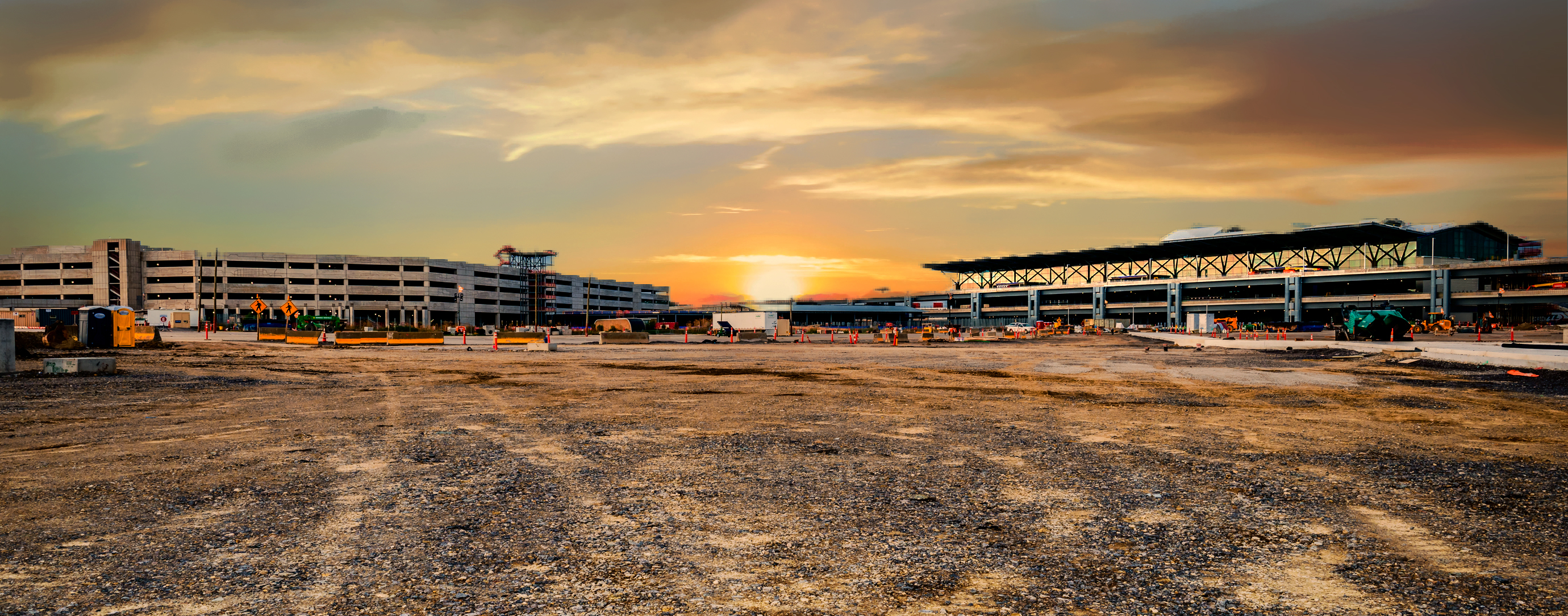At PIT, a Legacy of Innovation Continues
by Matt Smith, Allegheny Conference on Community Development & Allegheny County Airport Authority Board

One of southwestern Pennsylvania’s greatest competitive strengths is its ability to reimagine itself for the future. Later this year, the region will take a bold step forward with Pittsburgh International Airport (PIT) unveiling a new state-of-the-art terminal – one that modernizes travel while reinstating the airport’s role as a gateway to economic opportunity.
As vice-chair of the Allegheny County Airport Authority Board, which oversees Pittsburgh International Airport, and chief growth officer of the Allegheny Conference on Community Development, I see firsthand the impact of PIT as a leader of innovation and collaborator with us on economic growth for the region.
Under the leadership of our CEO, Christina Cassotis, PIT has been intentionally championing the region’s unique strengths and competitive advantages in a variety of ways – from hosting global conferences on AI and robotics and adopting these technologies into every aspect of the airport operation to leveraging the opportunities within energy transition and power generation. The $1.5 billion Terminal Modernization Program embraces the same commitment to deploying cutting-edge technology to solve problems at hand and drive true transformational change. Once completed, the new airport will not only be calibrated for modern-day passenger needs but it will tell the Pittsburgh region’s innovation story in a new way.
The new PIT is a tech-forward facility that is emblematic of today’s innovation and the Pittsburgh region’s future. It will match the industry-leading momentum we have seen already in many areas – energy, technology, robotics and AI, advanced manufacturing, and so much more. The architecture is reflective of the region through a concept of nature, technology and community. The undulating roof reflects the rolling hills of Western Pennsylvania with 38 tree columns as steel supports. A wood-like ceiling brings a feeling of nature indoors, and the latest technology will reflect our region’s tech prowess but also the ingenuity of the airport itself.
The airport has long been at the forefront of cutting-edge advancements in the future of aviation and energy. Its microgrid, which went live in 2021, made it the first airport in the world to be completely powered by natural gas and solar energy. The microgrid will also power the new terminal, reinforcing our region’s role as an energy leader in expanding power generation and PIT’s commitment to sustainability and resiliency. Our airport and the region are also at the center of what is coming next in energy – from sustainable aviation fuel on airport grounds to our region’s role in solving grid reliability challenges to enhancing our competitiveness via power generation and energy tech manufacturing.
That same forward-thinking approach is reflected in transforming the terminal while fueling the regional economy. Drawing from the region’s strong trade unions, the project has created thousands of jobs, with 90% of materials sourced locally. This terminal is built for Pittsburgh, by Pittsburgh. The airport has already signaled to businesses and investors that the region is ready for growth, generating more than 14,000 jobs, $2.5 billion in economic activity, and $1 billion in direct labor income.
But beyond its economic impact, the new terminal is designed to enhance traveler experience — whether it’s a student visiting a local college or a business looking to invest in the region. Practical improvements like an expanded security checkpoint with more lanes will cut wait times in half from curb to gate, while the elimination of eight miles of baggage belt means faster baggage delivery. Outdoor terraces, a rarity in U.S. airports, will give travelers access to nature, further setting the airport apart as a modern, welcoming front door to the region.
The new terminal is an investment in the future of southwestern Pennsylvania. It strengthens the region’s position as a hub for business and economic growth. Representing more than improved infrastructure, it’s a bold statement that the region is open for business, ready for the future, and leading the way in innovation and global connectivity.